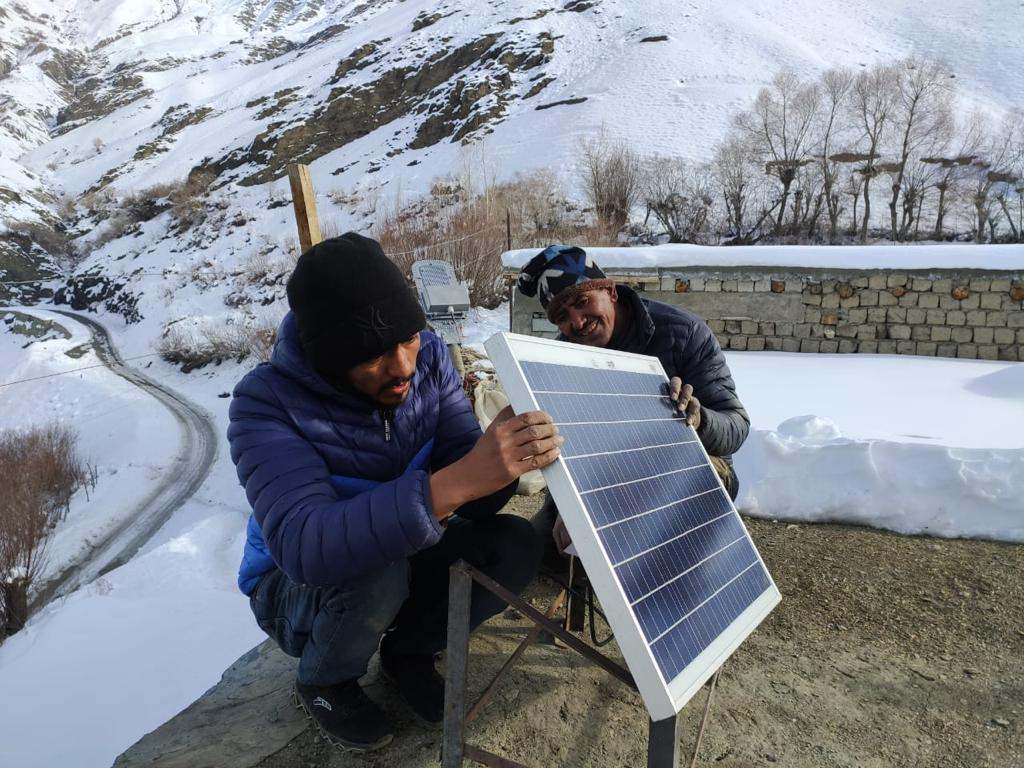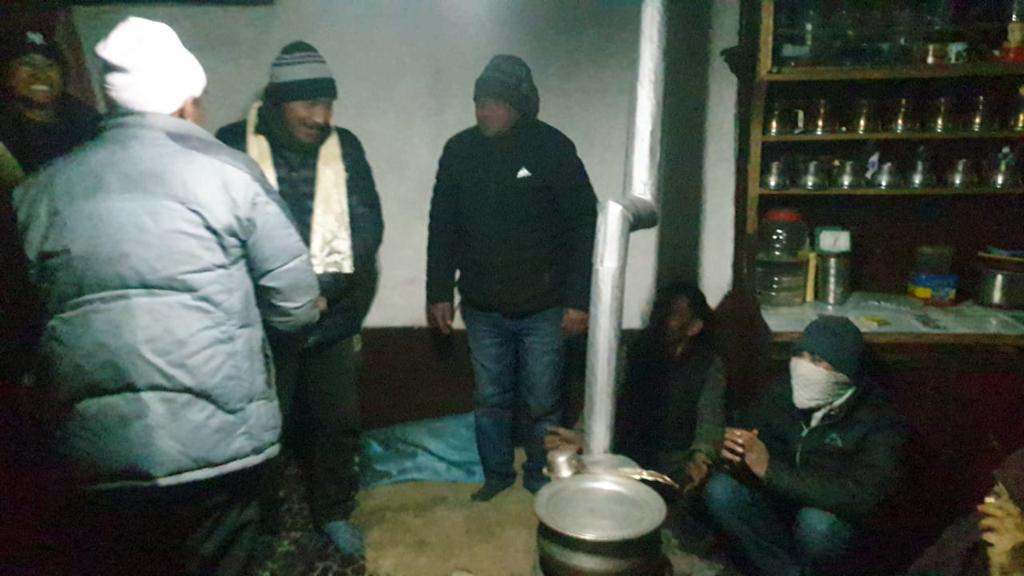JK News Today
Kargil, December 25:
On Christmas , the People of far-flung area of Kargil, 5 Mohalla of Umba Village have got the gift from Global Himalayan Expedition with support from Royal Enfield and KREDA in the form of Electricity.
In the cold harsh winter of Kargil, with freezing temperature of -25 degrees Celsius, the team of GHE engineers brought light and electricity to the lesser known village of Umba, situated at a distance of about 60 kms from Kargil.

Panch Malikbar, Mohammad Ali expressing the joy said that, the year 2020 will be known for the COVID 19 and the disruption caused by the pandemic globally. However, every black cloud has a silver lining that comes with it, as this came true for the villagers of Umba as 5 hamlets got Solar Electricity for the first time, ending ages of darkness for the communities and ending 2020 on a strong and positive note, added.
Dorjey from GHE said that The 5 villages hamlets of the Umba cluster that got solar electrified were Massar Yuljuk, Malikbar Thama, Mailkbar Skilma, Shilabar and Madd, with a total of 97 Households and 7 Masjids and a total solar capacity of 17.5kW was installed with more than 500 LED Lights, along with Street Lighting for the Community. He said that Each Solar Grid was provided with a battery back-up that will enable 4 days of continuous grid running even in cloudy conditions.

The project was initiated by Global Himalayan Expedition (GHE) in partnership with the CSR program of Royal Enfield, under the guidance of Kargil Renewable Energy Development Authority (KREDA).
A team of 4 GHE Engineers led by Shakir Hussain worked round the clock in the extreme cold conditions at -25Deg C along with the full support of the villagers to setup 103 Solar Grids in a record time of just 5 days. The entire team worked round the clock even in the freezing environment.
Sharing the challenges that lay in front of the team, Shakir Hussain from GHE said “It was really tough to work in these conditions, but what got our team going was the happiness and celebrations that we saw in each household as the lights were being turned on. The entire village came together to support our team and also took good care of us”
GHE has come up with an innovative Solar Micro Grid solution using energy efficient LED lights and DC appliances that has changed the electrification scenario of the region due to their aggressive planning on electrifying remote villages. Over the last 5 years, GHE along with the local support of KREDA and LAHDC has electrified over 100 remote villages, monasteries and hamlets in the regions of Leh, Kargil and Zanskar.
Paras Loomba Founder GHE said that All this work has been possible due to GHE’s partnerships with organizations such as the Royal Enfield and the CSR program of Royal Enfield is committed towards bringing in sustainable and holistic development for the Himalayan communities through multiple interventions around clean energy, education, livelihood and waste management.
Gaurav Sharma, CSR, Eicher Group Foundation said, “The vision of the Foundation is to preserve the fragile ecosystem of Ladakh and create a better future for the local population. For the same, our partnership with GHE has been successful in ensuring that the impact is sustained and the infrastructure that we setup is owned and maintained by the community”
Speaking on behalf of the villagers of Umba who have finally got access to electricity, Kacho Ahmed Khan, Project Director of KREDA said, “We really value our partnership with GHE to serve the villages that are located in the remote far flung areas and where conventional grid based electricity is not possible. The team at GHE have come up with an innovative Solar Micro Grid solution that is easier to install, maintain and break the geographical barrier to bring electricity to the villages”
The 5 villages of the Umba cluster are located at an altitude of more than 13000 feet and consist of 97 Households. The village remains cut off for more than 5 months in a year due to heavy snowfall, and has poor connectivity. The need of the hour is for technology to bridge the gap between the developed and the developing world, so that we can create a future where everyone has access to equitable growth.




